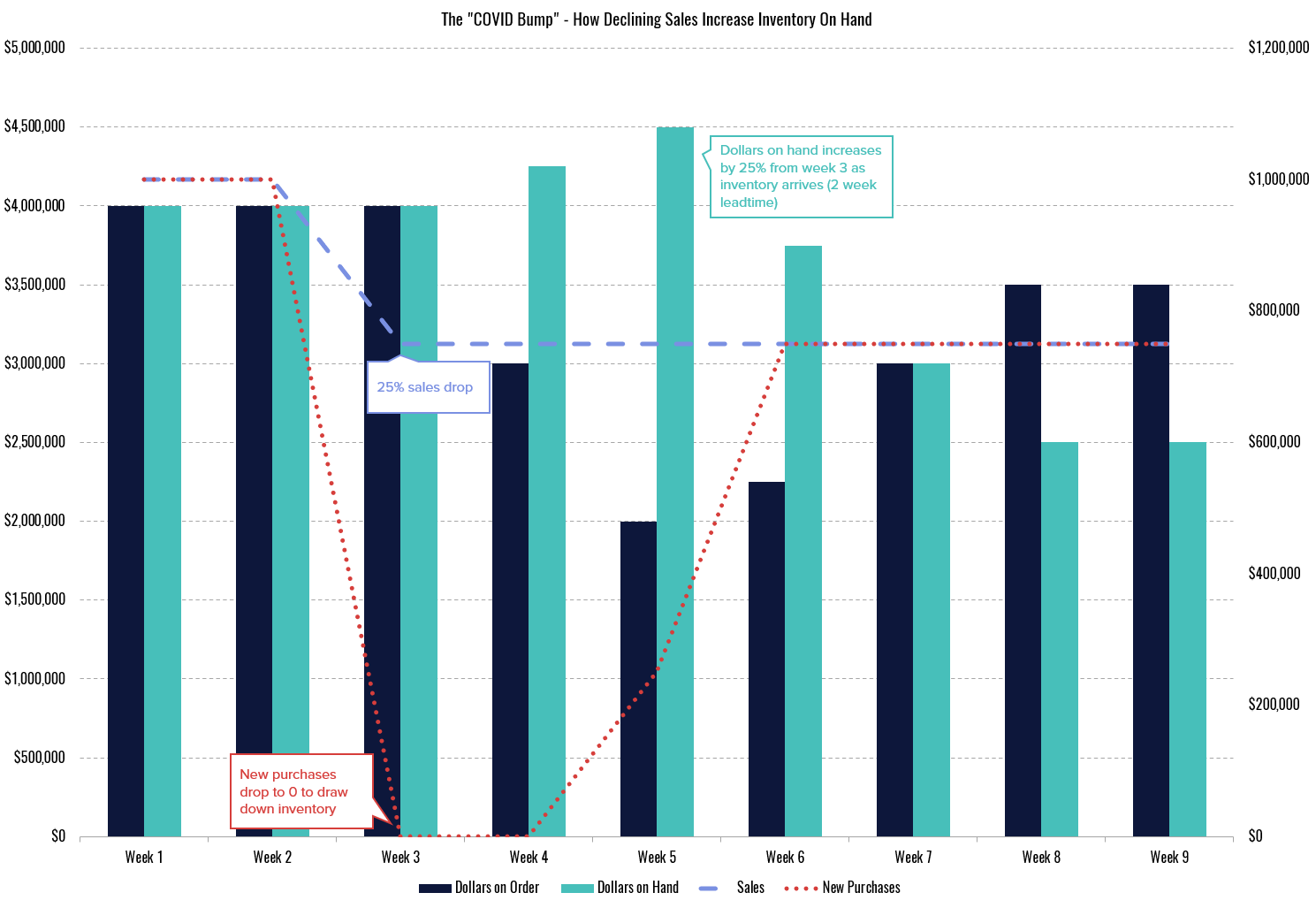One of the counter-intuitive rules of inventory management is that after a sudden drop in sales (like the one many of our clients are experiencing) inventory on-hand will rapidly increase before falling back below its original level. This is because vendor purchase orders are, to some extent, created to replace future sales that are going to occur during leadtime. If sales during leadtime are lower than expected, there will be more inventory remaining on the shelf when receipts arrive, leading to excess stock.
The chart below shows a hypothetical client that has around $1MM in weekly COGS, and typically has $4MM in inventory, with another $4MM in open POs not yet received. Leadtime is 2 weeks. At week 3, we've modeled a 25% sales drop. We assumed that the drop was immediately detected and that inventory targets (and thus purchasing) were immediately reduced:

Note that despite a drop to zero purchasing as we attempt to draw down the inventory, dollars on hand increases 12.5% to $4.5MM before finally starting to fall.
Had vendor leadtime been longer, the increase in inventory would be proportionally larger. For example, if this was an overseas vendor with a 12 week leadtime instead of the 2 week leadtime modeled, inventory would continue to build by $250k per week to a total of $7MM, a 75% increase! That increase will happen regardless of reductions in purchasing, because all of that excess stock was already on order when the sales drop occurred.
Mitigating the Spike
There are a few ways to minimize the damage from rising inventory value if there is a sudden drop in sales:
- Ensure that forecasts and inventory targets are updated frequently (at least weekly) during periods of high sales variability.
- As new inventory targets are set, look for items that will be overstocked once all open POs arrive. Contact vendors to see if these POs can be at least partially cancelled or pushed back.
- Utilize forecasts with a higher bias towards recent sales so that sales drops and spikes are quickly detected and properly weighted. If your system uses a simple monthly forecast (e.g. last 90 days / 3 or even last 12 months / 12) then extensive manual overrides will be needed.
- If space or cash are a concern, it may make sense to utilize discounts or other marketing activities to increase sales velocity closer to normal levels, thus reducing the amount of excess stock.